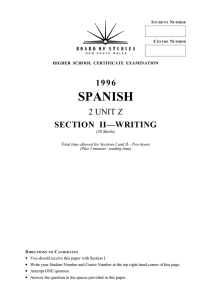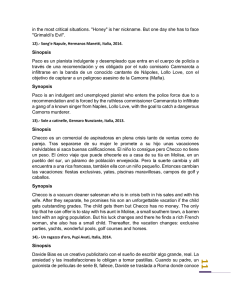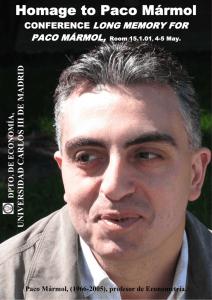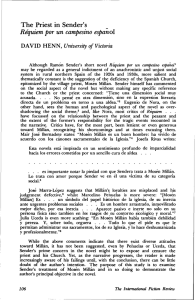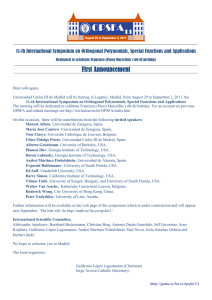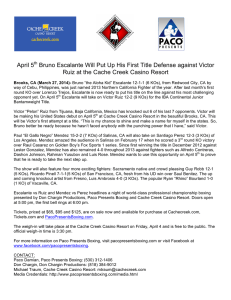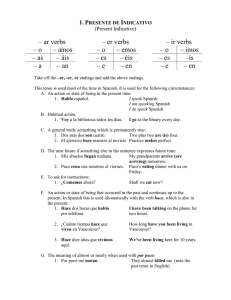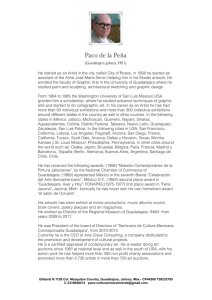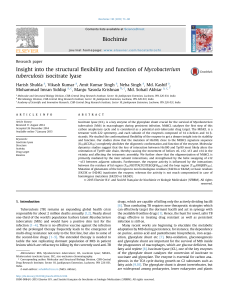obituary francisco cobos due˜nas 1942–2011
Anuncio
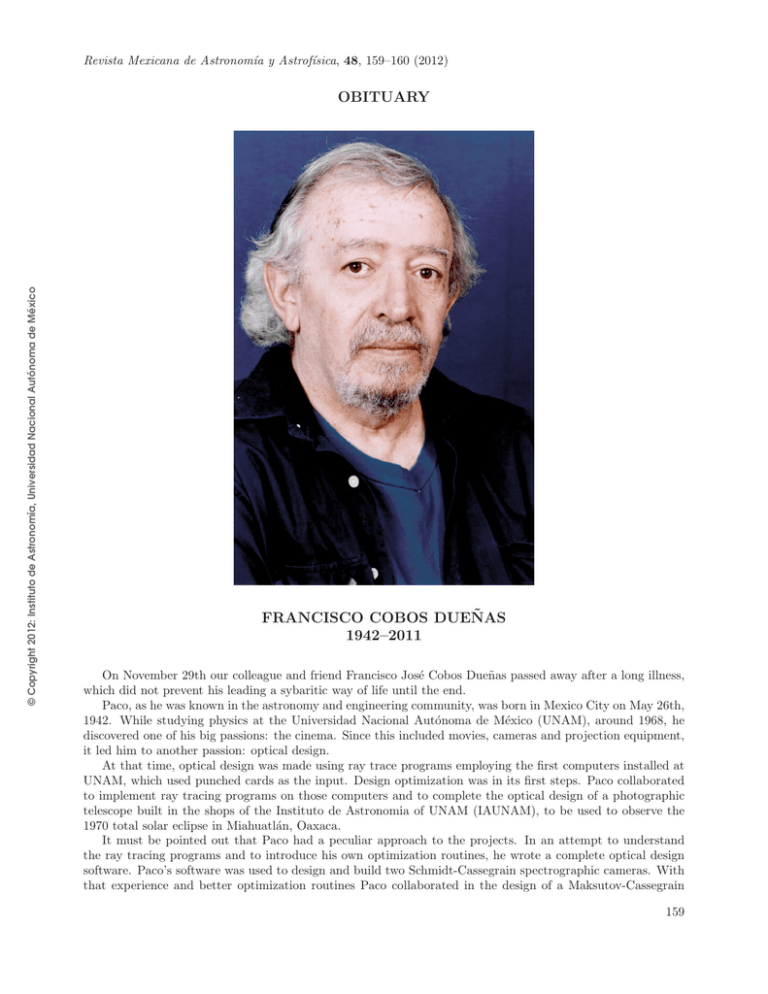
Revista Mexicana de Astronomı́a y Astrofı́sica, 48, 159–160 (2012) © Copyright 2012: Instituto de Astronomía, Universidad Nacional Autónoma de México OBITUARY FRANCISCO COBOS DUEÑAS 1942–2011 On November 29th our colleague and friend Francisco José Cobos Dueñas passed away after a long illness, which did not prevent his leading a sybaritic way of life until the end. Paco, as he was known in the astronomy and engineering community, was born in Mexico City on May 26th, 1942. While studying physics at the Universidad Nacional Autónoma de México (UNAM), around 1968, he discovered one of his big passions: the cinema. Since this included movies, cameras and projection equipment, it led him to another passion: optical design. At that time, optical design was made using ray trace programs employing the first computers installed at UNAM, which used punched cards as the input. Design optimization was in its first steps. Paco collaborated to implement ray tracing programs on those computers and to complete the optical design of a photographic telescope built in the shops of the Instituto de Astronomia of UNAM (IAUNAM), to be used to observe the 1970 total solar eclipse in Miahuatlán, Oaxaca. It must be pointed out that Paco had a peculiar approach to the projects. In an attempt to understand the ray tracing programs and to introduce his own optimization routines, he wrote a complete optical design software. Paco’s software was used to design and build two Schmidt-Cassegrain spectrographic cameras. With that experience and better optimization routines Paco collaborated in the design of a Maksutov-Cassegrain 159 © Copyright 2012: Instituto de Astronomía, Universidad Nacional Autónoma de México 160 OBITUARY – FRANCISCO COBOS DUEÑAS camera to be attached to a Boller&Chivens spectrograph for a TV detector coupled to a multichannel register system (OMA). This camera and the associated electronics were built at the IAUNAM shops and from that project onwards it can be said that UNAM attained the capability to build modern optical astronomical instrumentation. Furthermore in 1980 Paco’s software was used to design and build a field flattener and astigmatism corrector with a one degree field, to be used with the recently installed 2.1-m telescope at San Pedro Mártir (SPM) Observatory. In the mid 80’s the PC computers appeared, with their new graphical user interfaces. Several companies quickly updated the ray tracing software running on main frame computers to versatile optical design software packages at reasonable prices. The new software transformed optical engineering drastically. Paco in those years collaborated with the late Maximino Galán, and together they discovered the advantages of the new software implemented on PC’s. They studied different technical aspects of the instrumentation of the Instituto Astrofı́sico de Canarias (IAC) in Spain. Paco also collaborated on the first of the CAIN-dynasty of near infrared cameras for the NICMOS and HAWAII family of detectors. That camera was succesfully installed on the IAC telescopes. The CAIN project established Paco as a very skilled optical designer among the Spanish astronomical community. At the beginning of the 90’s Paco designed the optics for the PUMA focal reducer for CCD detectors and the TEQUILA focal reducer for a NICMOS near infrared detector. Both have been succesful science instruments at the SPM Observatory. During the late 90’s, as the large 8-m class telescopes emerged, Paco promoted among our group the need to study the novel engineering methods for the new technology telescopes and their instrumentation, the “Big League Projects” as he called them. The opportunity to be present at the “Big Leagues” came when Gary Hill from the University of Texas visited IAUNAM in 1994. He seeked to establish a colaboration for the Hobby Eberly Telescope (HET). He talked with Paco Cobos about the optical design problems encountered for the LRS spectrograph. Only few days later, Paco sent to the U. of Texas a complete design of the optics, fully within specifications. This was beginning of the HET collaboration with IAUNAM. The spectrograph was built with some optical components manufactured at the IAUNAM optical shop, and it became a very succesful science instrument. Paco contributed to establish the qualifications of the IAUNAM instrumentation group in Spain. As a result, the 10-m diameter Gran Telescopio Canarias (GTC) consortium invited our Institute to collaborate on the GTC instrumentation design. Our group, including Paco, designed the OSIRIS spectrograph and its imager optics. Now OSIRIS is the main instrument of GTC. Nearly at the same time, Paco participated in the design and engineering of the GTC Commissioning Camera. Those two GTC instruments paved the way for an invitation to design and build FRIDA, a spectrograph and imager for the near-infrared. Influenced by Paco, all the associated project members enjoyed each other’s company, shared his good sense of humor and learned to work together in harmony. Paco remained active until the end, being ready to work between medical treatments and always retained his good sense of humor, despite his illness. He will be sorely missed. Salvador Cuevas
